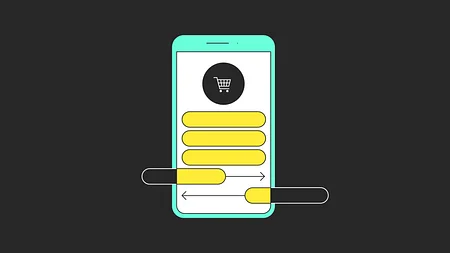How WeChat Used Viral Promotion to Become a Financial Services Instrument
60% of time spent on the internet in China is on WeChat. For young people, this is their primary gateway to financial services. In fact, in China, more transactions now occur, by volume, through non-banks than through banks. James Lloyd, Asia-Pacific FinTech Leader at EY, talks to us about how tech companies like WeChat are filling market gaps left by the banks.
Pretty impressive job title, and kind of a big region. Tell us a little bit more about what that entails.
Well, job titles are important in Asia in particular, so if it wasn’t impressive I’d be in trouble. A couple of interesting things about EY, we’ve got a regionally integrated P&L in financial services across Asia, so that means I sit in Hong Kong, but I’m not in a Hong Kong office, or even a Greater China office, it’s an Asia-Pacific capability. It’s very much focused on getting folks who have ideally some background or experience in building FinTech, or building, scaling, selling FinTechs, whether into incumbents or other, and really trying to understand, what are some of the trends that we need to be conscious of? Who are some of the interesting early-stage growth stage companies, and how might they want to work with some of the larger, more forward-thinking incumbents.
That’s clearly not a local Hong Kong accent you’ve got right there.
My wife and I, both Dublin born and raised, we got married end of 2011, and we said, “You know what, we’re going to set up shop here, we’re going to have kids, but let’s go somewhere for two years and do something totally different that we’ve never done before.” So we actually just said, “We want to go to Asia.” The idea was two years and home, and you know, five years and two kids later, we’re still there. Asia is an extremely exciting place to be right now.
Scale in Hong Kong is like no other, right?
A huge advantage of Hong Kong is just a world class transport infrastructure, but that includes the airport, the train in and out, and just being able to get to Vietnam in 90 minutes, or being able to get to Singapore in three hours, or Philippines and Malaysia, Indonesia, and then of course access to China. I’m up in China once a month, I’m back in Hong Kong next week, I’ll be up to Shenzhen for a couple of days, I’ll be up to Shanghai for a couple of days, and just having that connectivity with the region is great, right? So yes, I mean, I love it, right, but it’s also extremely hectic. The pace of life and the speed of everything is energising, but it’s also pretty exhausting, so you need to get out of the city pretty regularly, as well.
What is EY’s global, and APAC specifically, FinTech strategy?
We’ve got our Global Head of FinTech based in London, and he’s also responsible for EMEIA. We’ve got our Americas head based out of the Valley, and then we’ve got folks in markets like New York and elsewhere, and then of course myself in Hong Kong, and I’m looking at the APAC region. So we try and align across regions, and have a global connectivity, but what that means in practice is, “Hey, what are some of the big macro trends that we’re seeing, either on financial services or the technology side, and how is this going to impact our big existing clients, who, of course, are the big banks, big insurers, regulators? And then also, what are we seeing in the early stage growth stage space?
I spend a lot of time at the moment talking about how, from a consumer tech perspective, mainland China is miles ahead. But then I come to London and I spend a lot of time looking at the open banking side of things, and I’m like, “London is miles ahead, in that space.” If you look at some of the deep tech stuff, infrastructure piece, I think you could probably say that the US is, kind of, ahead on some of those aspects. So you know, how does this all fit together?
If you’re a big global, or regional incumbent financial institution and you’re sufficiently forward thinking to say, you know, “I need to care not just about what my competitors are doing here," but maybe "what Ant Financial is doing in China," or "what’s happening in India with IndiaStack?"
So we’ve kind of got a bit of a global view and then we take it to the region, and the region is very much about enabling high growth potential startups to flourish and to help them build their enterprise and prosper, while at the same time, working with some of the more forward thinking incumbents as they seek to say, “How do we take advantage of some of these new business models? How do we partner with smaller companies?” This is one of the areas that gets a lot of focus and attention, but I still don’t think people are getting it.
Everyone’s talking about big companies working with small ones, but for my mind, at least, it’s not really about accelerators or incubators, it’s about procurement policies, and vendor risk management, and technical integration, and that, kind of, hard, difficult stuff.
So, if you can bring together the right people in the room with the right skillsets, and you can put a business model around it, you can do some pretty cool stuff.
What big advantages do you think China’s got, particularly in the FinTech space?
China is the world leader when it comes to consumer FinTech. unmet needs in mainland China are considerable. So what I mean by that is, where in London, getting access to a bank account or a credit card or a basic investment or savings product is relatively straightforward.
In China, traditionally the banks have focused on supporting corporates and state-owned enterprises. So there has been this unmet need, this market gap, that the big technology players have really moved pretty aggressively to fill.
So, Alibaba moving from ecommerce into financial services through Alipay and Ant Financial, Tencent moving from messaging and gaming into WeChat, and ultimately WeChat Pay, and of course Baidu and so on and so forth. So I think there’s been this market opportunity, I think the regulatory environment has been very conducive to this, and in fact, whether it’s on peer-to-peer finance, whether it’s alternative payments, whatever it might be, the Chinese authorities have taken the view that, “Look, let’s allow these companies to grow until such a point, and perhaps then we introduce certain regulations, limiting factors and so on.”
Everything is not just mobile first, in many cases, it’s mobile only. And, you know, there’s some really interesting business model innovation. I think there are opportunities to export some of that business model innovation, and certainly to replicate it.
Surely the big tech companies are looking at this and saying-, if I’m Facebook, or I’m Amazon, I’m looking at this saying, “Hey, this is a great opportunity for us to move laterally into Financial Services, and kind of avoid, perhaps, some of the regulatory issues that we might have if we were a pure bank.”
if I’m Facebook Messenger or WhatsApp, you know, “Hey, I should be looking at what WeChat is doing, from an ecosystem or platform perspective, because it’s pretty phenomenal.” If I’m PayPal, Alipay are doing some really interesting stuff, not just on payments, but on insurance, on credit scoring, on digital banking and so on. And Amazon, Alibaba, and so on and so forth.
How innovative are the Chinese banks?
China itself is a pretty opaque market. So, kind of getting a sense of what’s happening at a macro level is difficult. SMEs, consumers, have not traditionally been a big focus of the Chinese banks, but I think they’re beginning to appreciate that when I move money from my bank account and move it onto an Alipay wallet, or WeChat wallet, and from there I’m doing peer-to-peer payments, I’m booking taxis, I’m booking, you know, dinners, I’m splitting bills, I’m doing all that kind of stuff, and indeed a whole range of additional services, that the banks aren’t seeing any of the transaction data come back. So I think the big thing is, of course they’re losing card fees, UnionPay being the single card scheme in China, so they’re being impacted from a revenue perspective, but I think, increasingly there’s the realisation that, “Hey, we’re also losing a lot of that transaction data."
These big technology players, be they the Chinese ones, or some of the others, aren’t looking to disrupt banking, per se. They’re looking to disintermediate the banking relationship with the customer. They don’t want to build the core infrastructure. Why would you?
60% of the time they spend on the internet in China they spend on WeChat. For young people coming up, their primary gateway to financial services is non-banks.
I use you as my point of reference for most of the statistics for Hong Kong, quite frankly. The red envelope statistics that have come through were just phenomenal.
In the six-day Chinese New Year holiday that just passed, there were 46 billion transactions on WeChat alone. So that’s 46 billion 'red packets,' which are the traditional gift that you would give of some monetary value. 46 billion. So, I mean, to put that in context, I often compare it to PayPal and say, you know, this is an order of magnitude obviously greater than PayPal did globally, but it’s a little bit of an unfair comparison, because the manner in which they’ve constructed this red packet product is such that it lends itself to this virality.
The really interesting thing for me is how WeChat, a messaging service, through this type of promotion, through this type of business model innovation, has enabled or encouraged so many people to associate their payment credentials. Because if you think about it, if WhatsApp or Facebook come to you and say, “Hey, can you attach your credit card or bank account?” probably you’d be thinking, ”Why?” firstly, and, “Is this something I want to do?” But if you’ve suddenly got this, kind of, viral promotion, and red packets was only launched four years ago, the speed of adoption has been such that this messaging platform has become a financial services instrument.
An interesting stat which I think is underappreciated is [that] according to the People’s Bank of China...more transactions now occur, by volume, through non-banks than through banks.
So the volume is: about 54% of all transactions now run through non-banks. Now, the value, of course, is still all with the banks. It’s, like, 96% or something. So what does that mean? Well, microtransactions, you and me exchanging money or red packets or whatever else, through WeChat, through Alipay, predominantly. That’s where the customers are.
So, as a consequence, if the customers are spending their time on messaging apps, well then increasingly, the banks in China have begun to, of course, integrate with WeChat. So if I want to now check my balance with any of the big China banks, I can do it through WeChat. Ultimately, I’ll be able to move money in and out of my account. Well, I can now, of course, but ultimately I’ll be able to do more and more financial services, perhaps manufactured by banks in the background, but it’ll be through the WeChat interface, because that becomes the operating system.
Asia see this is as a very real threat, and I think then come out to Europe and the US, and it’s a question of, “Are there comparators out here?” Whether it is the Amazons or Facebooks or Apples of this world. Or, perhaps, is it the Chinese themselves.
The major winner in all of this should really be the customer, shouldn’t it?
New people coming in is key. Can the incumbents get innovation before the Fintechs get distribution? I still think that hasn’t been resolved yet, and I think in some markets you’ll see some very forward thinking incumbents who get the right people, get the right process and make the right investments, and I think you’ll see some fall behind and become the manufacturer product who become disintermediated, and who have to live with the margin compression that goes with it. You’ll see some fintechs of whom, you know, what, 90% of them are not going to succeed, but of the 10 that succeed, maybe five of them go on to become real, sizeable players both regionally and internationally. So yes, it’s a super exciting time."
Enjoyed this article? Subscribe to our newsletter for more valuable content. And don't forget to subscribe to FinTech Insider, the #1 podcast for all things FinTech and Financial Services.


